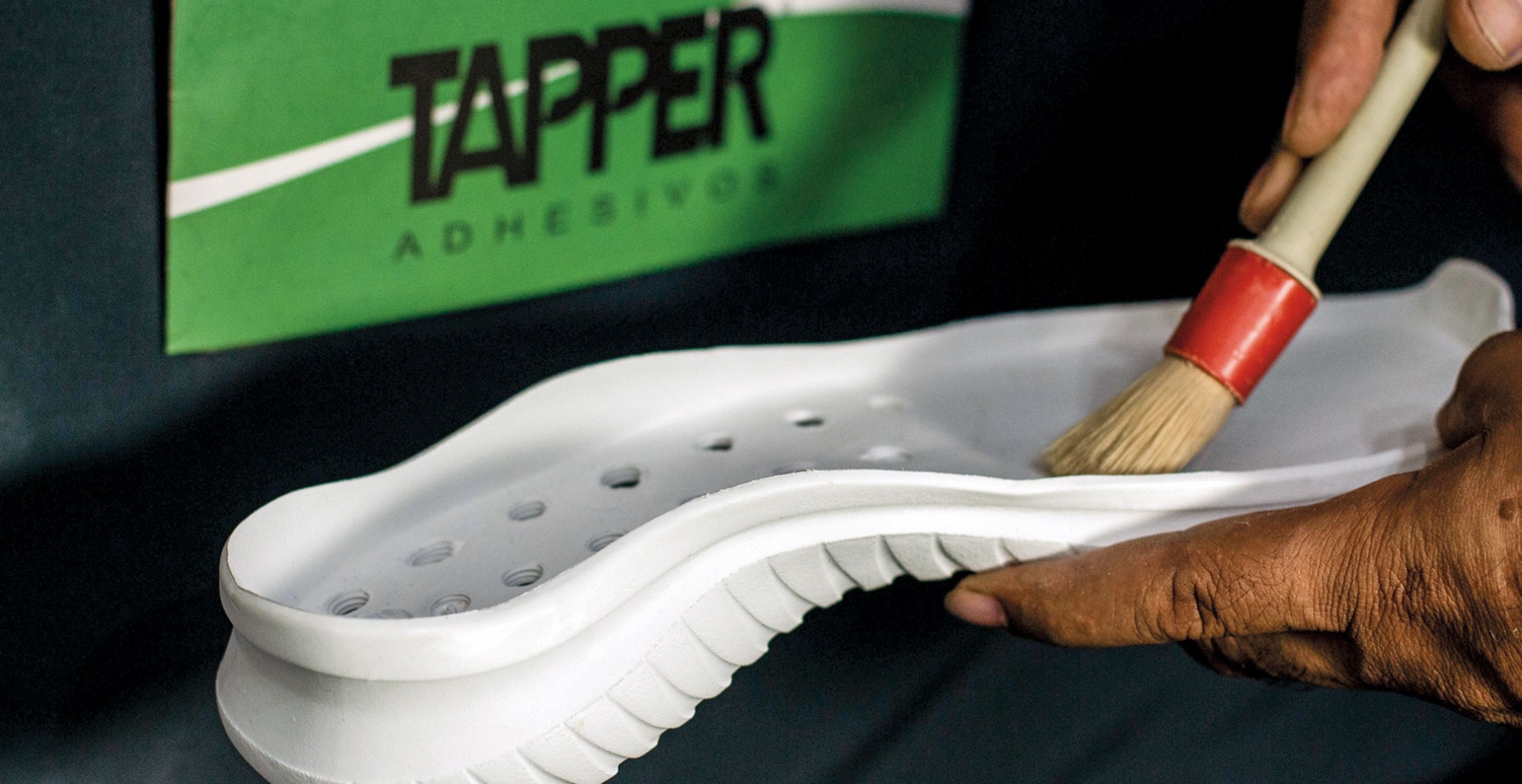


EVA adhesives are specially formulated to be activated at a lower temperature and thus avoid contractions or deformations, as in the case of soles and handmade soles.
EVA compounds have very particular properties and characteristics, which need to be treated with specific products to modify the polarity of the surface, and thus make them compatible with the adhesive.
In the process for preparing the substrates, prior to gluing, an adequate cleaning with a special EVA cleaner is necessary, to then apply the “primer”, also special for EVA, and finally the PU adhesive.
Regarding the open time in the gluing operation, it depends on the formulation and the type of adhesive used. For example, an adhesive with a very long open time takes longer to achieve its maximum strength, and if the bonding is submitted to an immediate effort (for example, removing it from the last without going through the freezer), detachments may occur.
Another situation occurs when the open time is very short and the positioning of the upper with the sole is more complex, and exceeds that available time. In this case, adhesion problems can also occur.
For this reason, it is recommended when choosing adhesives the entire gluing process be taken into account, not only the types of materials.
Related to reactivation and temperatures, there are adhesives for cold gluing but they are not advisable, especially for sports shoes with EVA soles, which are exposed to greater efforts.
For the reactivation of EVA adhesives a temperature between 55 and 65 degrees is recommended. If it is higher, there is a risk that the soles will deform.

RELATED ARTICLE:
- Shoe gluing process: problems and solutions